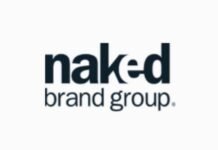Data optimization can help drive efficiency, open new revenue streams, and identify industry-specific solutions. With the right analytics tools and infrastructure, you can realize its full potential.
By observing trends and acting on them quickly, your business can create more impactful outcomes for the organization. Optimizing your data flow is a must for anyone trying to make the absolute best decisions based on their data.
Since understanding and implementing effective data pipeline techniques isn’t always easy, here is a brief overview of how these techniques work and the technology behind them.
Benefits of Using Data Pipelines
There are, of course, numerous benefits of using data pipelines. One, for example, is web data scraping because this gives you the power to collect and organize data from web sources.
Whether you’re looking for contact details, prices, or product listings, web scraping provides a fast and cost-effective way to get the data you need.
It’s essential to have an experienced individual involved in setting up the system from the very beginning — if done correctly, data pipelines can make life easier down the line and supercharge your operations.
Data pipelines are essentially the flow of data from one point to another. This includes extracting it, transforming it, loading it into a database, and then making use of that data in whatever form is required.
Automating data pipelines enables you to quickly acquire the most trustworthy and current intelligence so that better decisions can be made without sacrificing quality.
When constructing data pipelines, three major components are essential for consideration: storage, transformation, and automation. Storage is the means by which your data is kept; transformation modifies the existing information to make it more beneficial; and finally, automation handles and supervises how information moves through the pipeline.
When these three components are combined, a powerful data pipeline is formed. It’s important to consider the requirements for each stage of processing, but when done right, it can lead to improved outcomes and tremendous enhancement in productivity.
Utilizing data pipelines provides a bevy of advantages, from ETL operations to machine learning and beyond. However, it’s essential to identify the proper combination of components that will best suit your workflow by emphasizing quality over quantity. With an accurately constructed setup in place, you can minimize unnecessary manual labor while simultaneously optimizing processes and cutting down on time spent working at same time.
Automation and sophisticated algorithms create the opportunity to rapidly expand operations while keeping costs low through data pipelines.
Technologies to Implement Data Pipeline Techniques
A range of technologies available can help with data pipeline integration. For example, cloud-based solutions like AWS and Azure offer scalability and high security for seamless data storage and retrieval. Or you can go for open-source tools such as Apache NiFi, Apache Airflow, or Pentaho Kettle if you want more control over customization.
3 Tips for Streamlining Your Data Flow
1. Quality Assurance Testing
Use this to monitor performance issues early on and make sure everything is running smoothly as you scale up your system. It’s essential to anticipate problems, verify data integrity, detect discrepancies in product quality, and deliver a delightful user experience. Testing allows us to be smart about how we use our resources in tech-based businesses; it helps keep our output consistent, reliable, and efficient. Don’t get caught off guard–make sure you stay ahead of the game and invest the time in enacting an effective quality assurance testing process.
2. Modular Architecture
Designing an architecture that is modular allows for easy maintenance as well as maximum flexibility. With modular architecture, developers can isolate components that should be updated independently, giving them the necessary freedom to make all kinds of changes when needed with minimal disruption. This versatile design approach has been showing steady growth in popularity among business owners who want to maintain their competitive edge and maximize cost savings.
3. Automation
Automating tasks will minimize error rates while still giving you access to real-time results efficiently. Automation will greatly minimize your error rate while still giving you access to real-time results quickly and efficiently. Automation isn’t something people should be scared of; it’s an opportunity to get the most out of your business or organization.
Why Use Data Pipeline Technique?
Streamlining processes creates efficiencies throughout your organization that will bring benefits across the board–from cost savings to improved customer experience. Get started today on making your workflow run smoother than ever.

































